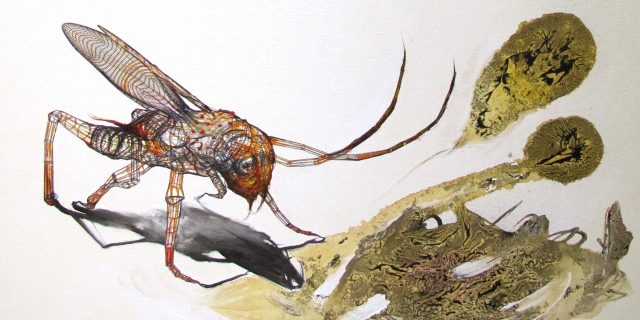Luis Moro’s painting has always taken on the challenge of telling stories, stories filtered between drawings agile and transparent colors. Create astride major mythical tales and his work is a constant metamorphosis of reasons and passions. Sacrifices and totems. Dollhouse havens. Figures protagonists water, color and texture, landscapes suggested on white backgrounds, re-imagined involution.
And a careful and integrated range of techniques handled with meticulous precision Moro and subtle artifice, mixed media on paper, canvas or board, infographics with paintings, serigraphs with oil, timber and furs zoomorphic drawings collages on ephemeral, paper cutouts, light, and patinated bronze in forms of bulls, fish or snails. And this display of resources enables the possibility Luis Moro expressive and daring demiurgic initiated into a “garden lively” fantasies reflecting liquid, bright and transparent. Images that anticipate a reconciliation between the plant and animal life, including early life and culture elegant, refined, but respectful.
As we have discussed in other exhibitions, painting is pure zooilogía Luis Moro (1998). Before synthesis of complex and rich and secular saints, angels and demons, fish and dreams of machines and souls, now approaching virtual reality. Neobarroca and hyper paint while expression and printing. Gone is Mithraeum, “Papaloapan” (“River of Butterflies”) and “Xoloitzcuintle” are new incarnations. Now add up fantastic animals, mechanical grasshoppers, seahorses Gemini, pupae in fish eyes. Arthropods amphibious experimental and dance in search of El Dorado. Moro’s paintings suggest narratives in which merge and integrate graphs and icons, enigmas and zoetropes, cronopios and uroboros, who come from different cultures, overcoming boundaries and prejudices, revealing a meaning that is largely universal. Moro proposes a transcultural art, with a pedagogical intention and critical, creative and committed, investigating microscopic images and liberating dream of “elementary Havens” to “Gardens animated”.
Zoetropes, cronopios and uroboros …



